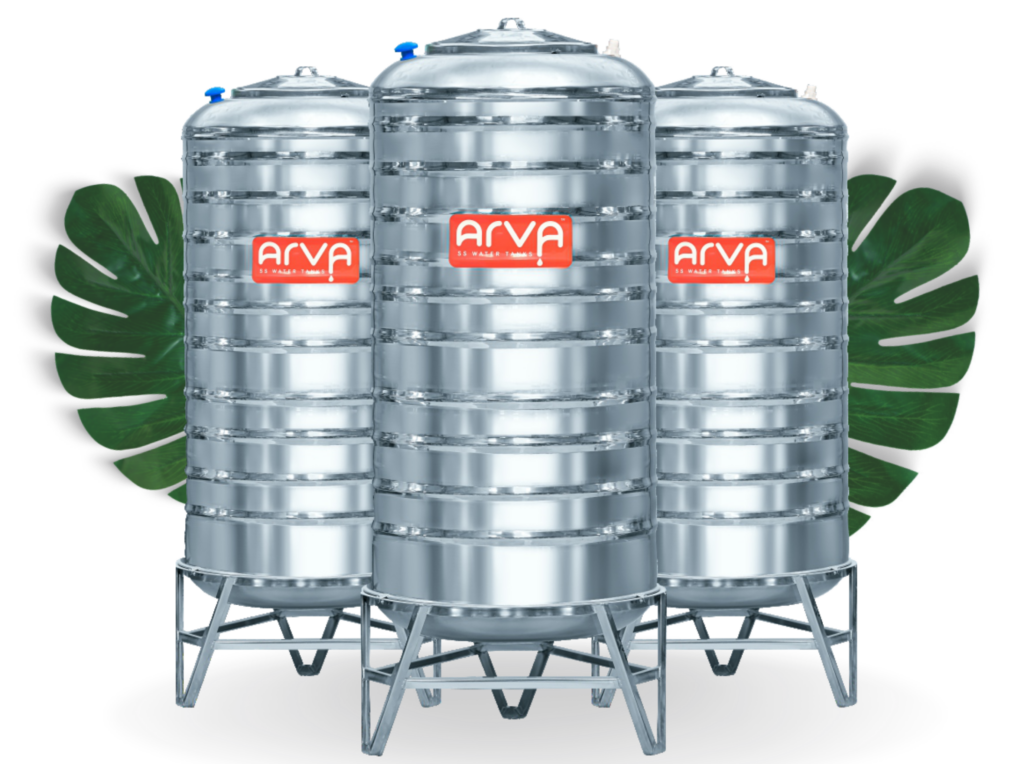
Introduction:
Access to clean and pure water is paramount for maintaining health and well-being. As concerns about water contamination and environmental sustainability continue to rise, the choice of storage vessels becomes crucial. Among these options, stainless steel water tanks have emerged as a preferred choice, not only for their durability but also for their ability to maintain water purity. Stainless steel tanks stand as the epitome of water storage superiority, offering unmatched durability and reliability compared to plastic alternatives.
Why stainless steel?
Stainless steel, an alloy primarily composed of iron along with chromium, nickel, manganese, and other elements, earns its moniker from its exceptional resistance to corrosion and staining. This resistance is attributed to the formation of a passive oxide layer on its surface, predominantly consisting of chromium oxide. This oxide layer serves as a protective shield, thwarting further oxidation and corrosion of the underlying metal.

Corrosion Resistance:
Central to the allure of stainless steel water tanks is their unparalleled resistance to corrosion. This resistance assumes paramount importance in preserving water purity, as corrosion poses a significant risk of introducing contaminants into the water supply. Unlike materials like iron or mild steel, prone to rust and corrosion, stainless steel remains impervious to the deleterious effects of water exposure, thereby ensuring the integrity of the stored water. , they excel under high water pressure and when submerged, ensuring longevity.
Hygienic Virtues:
In addition to its corrosion resistance, stainless steel boasts inherent hygienic properties, rendering it an optimal choice for storing potable water. Unlike materials such as plastic or concrete, which may leach chemicals into the water, stainless steel is inert, refraining from reacting with water or imparting any undesirable taste or odor. This inertness serves as a bulwark, preserving the purity of the water and shielding it from potential contaminants.
Resistance to Bacterial Colonization:
The smooth, non-porous surface of stainless steel impedes the adherence and proliferation of bacteria, algae, and other microorganisms. This resistance to biofilm formation assumes critical significance in upholding water purity, as biofilms harbour harmful pathogens and can compromise water quality. Their smooth surfaces allow easy stain removal, while seamlessly accommodating water filters for enhanced purity.
Endurance and Longevity:
Renowned for their durability and longevity, stainless steel water tanks surpass their counterparts in resilience. Unlike materials susceptible to degradation over time, stainless steel exhibits resistance to wear, tear, and environmental factors such as UV exposure and temperature fluctuations. This enduring nature not only guarantees the sustained purity of the stored water but also minimizes the need for frequent maintenance and replacement, underscoring stainless steel tanks as a cost-effective and sustainable choice in the long haul.
Adherence to Regulatory Standards:
Widely embraced across various industries, including food and beverage, pharmaceuticals, and water treatment, stainless steel water tanks adhere to stringent regulatory standards for water purity and safety. This compliance with regulatory requisites furnishes assurance to consumers and regulatory authorities alike, reaffirming stainless steel tanks as guardians of water purity.

Properties of non-reactive and resistance to leaching contaminants:
Non-Reactive Strength: Stainless steel stands as an inert shield, impervious to chemical interactions observed in other materials. Unlike plastics or concrete, which may alter water quality, stainless steel remains steadfast, ensuring water purity without taste or odour changes.
Resisting Contaminant Leaching: Leaching, a process where materials seep into water, threatens purity. Stainless steel thwarts this risk with its composition devoid of harmful additives, ensuring water remains untainted from storage to consumption.
Preserving Purity: Impervious to external influences like sunlight or temperature shifts, stainless steel safeguards water quality. Its durability ensures water emerges from these tanks untainted, regardless of environmental conditions.
Sustainability and Compliance: Stainless steel’s longevity and recyclability align with sustainability goals. Meeting and exceeding regulatory standards, these tanks inspire consumer confidence across residential, commercial, and industrial sectors. Meticulously welded for structural integrity, stainless steel tanks optimize space with their stackable design, catering to diverse residential and commercial needs.
Conclusion:
Stainless steel water tanks transcend their role as mere receptacles; they emerge as custodians of water purity. Through their corrosion resistance, hygienic attributes, resistance to bacterial colonization, endurance, and regulatory compliance, stainless steel tanks stand sentinel, ensuring that water remains pristine, safe, and uncontaminated throughout its storage. As the significance of water quality garners increasing recognition, stainless steel water tanks epitomize the fusion of scientific prowess and engineering ingenuity in safeguarding our most precious resource: water.



